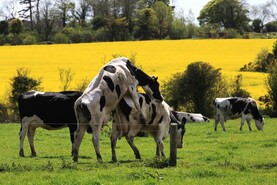Just over 57% of beef farmers said they would not be willing to rear dairy-beef calves through to beef in a recent Department of Agriculture study.
The main reasons for this included an expectation of a low profit margin, expectation of a poor-quality calf and issues with beef market volatility.
It could be argued that a central theme to all of the three points listed above can be related back to the quality of the calf.
Okay, calf quality will not guarantee a good beef price on the day of slaughter, but it will mean that you are maximising the beef price received for the animal at that time - a poor-quality animal and a poor beef price will never be profitable.
Improving the quality
So from here, the question needs to be asked - how do we improve the quality of the beef calf coming from the dairy herd?
For me, the first step needs to be knowing the genetics of the animal you are working with.
Of all the beef calves born from dairy cows in 2020, 19% were by an AI sire, 36% were by a stock bull and 45% had no sire recorded.
Where it’s a dairy sire on a dairy cow, the number with no sire drops by almost 50% to 27%
Dairy farmers know better than any sector the power of data recording and yet they continue to record no sire when registering calves.
Where it’s a dairy sire on a dairy cow, the number with no sire drops by almost 50% to 27%.
Genomics
Genomics offers a solution to this problem and could be sorted with compulsory genotyping of dairy-beef calves.
When reading the results of the Department’s dairy-beef integration survey, it came as a shock to see that less than half of respondents rated the genomic verification of calves as either extremely or very important, while almost 10% stated it was not important at all.
Surely, more knowledge of the genetic potential of the calf at the point of purchase has to be a benefit to the beef farmer.
Once this is in place, the market can then drive the improvement of the quality of calf, as prices paid would reflect the genetic potential of the calf offered for sale.
There was a huge demand for calves this spring, with reports of many beef farms rearing calves for the first time.
The tools to improve calf quality, such as the dairy beef index, are there and are getting better each year.
If these farmers are to have a positive experience with dairy-beef and are to return to the sales ring to purchase calves year after year, dairy farmers need to use these tools.






 This is a subscriber-only article
This is a subscriber-only article










SHARING OPTIONS: